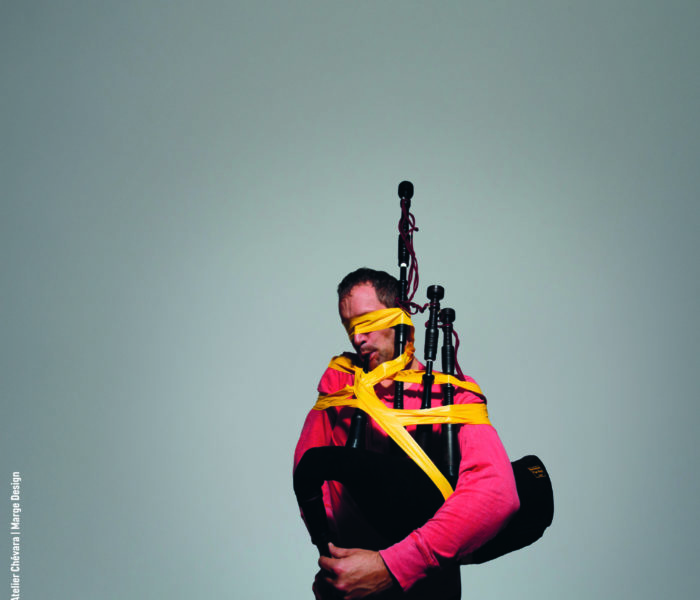Today, traditional instruments are increasingly used in experimental music. They are also being integrated into the written repertoires of musical creation, as soloists or in ensembles. We no longer hesitate to add numerous electronic effects, or to transform their lutherie. Musicians with a traditional training and culture are happily crossing increasingly permeable boundaries to explore other sound worlds.
While this phenomenon is taking off in an unprecedented way, particularly with new technologies and the infinite possibility of listening to a worldwide sound library made available on the Internet, written art music has always been nourished by folk music of oral tradition: whether we think of Renaissance folk songs and dances integrated by composers into their polyphonic edifices; Baroque suites, reusing popular dances in an aristocratic context; or the Romantics' adoption of national traditions, both as a claim to an authentic art form close to the roots of the people, and as a desire to exalt a powerful unifying patriotic sentiment. The 19th century thus saw the emergence of numerous national schools throughout Europe, marked by these traditions and at the origin of strongly characterized music, far beyond the dominant musical nations that had until then been the main driving forces in the history of music: France, Germany and Italy. After an initial period marked, for example, by Frédéric Chopin's mazurkas and polonaises, evocative of his distant and martyred homeland, or Franz Liszt's Hungarian rhapsodies, other important schools emerged: Russian, Norwegian, Finnish, Danish, Spanish, Czech and others. This wide-ranging movement, illustrated by dozens of composers, intensified in the second half of the century, enriched by musicological research and collections, such as those of musicologist Felipe Pedrell in Spain and the French folk movement. In France, for example, Emmanuel Chabrier's Auvergne bourrées, Guy Ropartz's and Jean Cras's Breton roots, and Vincent d'Indy's Cévennes references were all part of this trend. At the turn of the 20th century, this movement took a scientific turn with the birth of ethnomusicology. One of its earliest exponents was composer Béla Bartók, whose initial collections were made alongside Zoltán Kodály.
Then things slow down. Composers look elsewhere, to jazz, which is shaking up the planet, to the exploration of new complex grammars or new instrumental technologies. Meanwhile, ethnomusicologists continued to collect music, with the idea of saving a gigantic heritage that was in the process of disappearing. Extremely rich and diversified recordings are piling up in many countries, like the exceptional work of John Lomax and his son Alan Lomax in the USA, recording a veritable musical treasure trove for the Library of Congress: work songs, sacred songs, wakesongs, dances and blues from the Southern states and the Caribbean. It was from these important sources that a second fundamental wave was born, this time in the pop music of the fifties and sixties, dubbed the "folk revival". Originating in the United States, where it was tinged with the beatnik and then hippie spirit, this movement spread throughout the West. After Leadbelly and the protest songs of Pete Seeger and Woody Guthrie, Bob Dylan, Joan Baez, Buffy Sainte-Marie, Canada's Joni Mitchell and Britain's Donovan took the reins.
In France, Malicorne and the Breton music of Alan Stivell and Dan Ar Braz stood out among a myriad of groups that enjoyed great success in the 1970s. Collections and recordings of Breton, Auvergne, Alsatian, Basque and Occitan heritage also flourished. Anonymous performers were sometimes thrust into the limelight, like the Goadec sisters and their timeless heritage kan ha diskan. Hundreds of musicians have been recorded, notably for the Radio-France Ocora and Le Chant du Monde labels.
Again, the movement ran out of steam at the end of the decade, notably shaken by the punk wave and the deployment of electronics in popular music, which made it seem old-fashioned. Today, folk music is enjoying a revival and, above all, a new face. More than ever, its traditions are reinventing themselves, no longer hesitating to look to electronic technologies and to tangle with the experimental and improvised music scenes. Whereas John Cage and Karlheinz Stockhausen were interested in exotic ensembles far removed from their own culture - Balinese gamelan and Japanese gagaku, respectively - today's composers and performers are immersed in their own soil, or at least interested in music and instruments geographically closer to home. Examples of this are increasingly numerous. For example, since 2010, Breton piper Erwan Keravec has made a specialty of commissioning works from over twenty contemporary composers for his bagpipes; Kaija Saariaho gives pride of place to the traditional Finnish kantele, played by Eija Kankaanranta in the orchestra of her opera Only the Sounds Remains (2015); the Kronos Quartet integrates the Russian hurdy-gurdy(kolesnaya lira) on Quartet for Five.
Erwan Keravec points out that "bagpipes and binious have not been purified like other instruments in order to fit into bands, so they are very rich in harmonics". This characteristic is unique to all these traditional instruments. Combined with their particular playing techniques, it enables composers to break away from a highly standardized Western instrumentarium, when the musicians are not themselves involved in experimental practices (drone, sound immersion, spatialization...), time games, installations, new lutheries), such as cellist Yann Gourdon and the La Nóvia collective to which he belongs, or Kreis /collectif continu in Strasbourg, with Lise Barkas, Félix Chaillou, Léo Maurel, Lisa Käuffert, Ross Heselton and Léonie Risjeterre. At the same time, folk's labels in a more pop sphere have exploded over the last thirty years: indie-folk, folk metal, neofolk, laptop folk, electro-folk... It's a new age of folk, in a time when the blinkers have fallen off and all aesthetic crossovers are possible. It's when traditions fail to renew themselves that they condemn themselves to oblivion.
Guillaume Kosmicki



)



